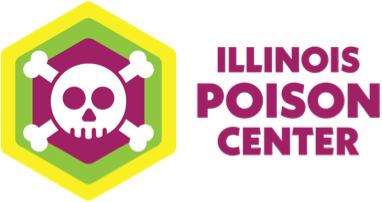Insecticide
Eek—it’s a bug! But before you reach for bug spray, make sure you’re aware of the health risks associated with insecticide. IPC encourages you to always read the label for insecticide for both indoor and outdoor use. Even organic products or those labeled as “natural” should be handled with care.
If someone has accidentally ingested or touched insecticides, call IPC at 1-800-222-1222. Call 911 if someone is unconscious, not breathing, or having convulsions or seizures.
U.S. retailers sell almost 900 different kinds of household insecticides. IPC commonly receives calls about products in these two categories: pyrethoids and nerve poisons (organophosphate and carbamate). Nerve poisons are especially toxic to humans and animals
Pyrethoids
The majority of bug killers are pyrethoids, which contain a synthetic compound similar to pyrethrum, the natural pesticide produced by chrysanthemum flowers. Popular pyrethoid brands include Raid®, Cutter® and Spectracide®.
Symptoms of pyrethroid exposure:
- Skin rash
- Tremors
- Cough
- Nasal irritation
Hypersensitivity or allergic reactions are also possible after exposure to pyrethoids. Symptoms could range from a slight cough to a life-threatening allergic reaction (anaphylaxis).
Nerve poisons
Organophosphates and carbamates—typically used in agricultural settings—are especially toxic to humans and animals. The most common ingredients include carbaryl, malathion, parathion, diazinon and chlorpyrifos.
Never spray insecticide directly onto your skin.
Symptoms of organophosphate exposure:
- Difficulty breathing
- Confusion
- Runny nose
- Increased sweating or salivation
- Stomach cramps
- Dizziness
- Chest tightness
- Nausea
- Muscle twitching or weakness
How to safely use insecticides:
- Read the directions carefully before use.
- Follow instructions carefully before mixing or diluting the product.
- Wear protective clothing when applying insecticides (gloves, goggles, long sleeves and pants).
- Wash your hands and change clothes immediately after using insecticides.
- Do not use near open flames.
- Wipe down any items that may have been exposed to insecticides.
- Keep children and pets away from insecticides.
- Store insecticides in their original container after reading storage instructions carefully.
- Dispose of insecticides responsibly, according to instructions on the container.
Tips for Outdoor Safety
Never apply insecticides outside on a windy day.
Tips for Indoor Safety
Never use outdoor products inside. Open windows to ventilate the space and always alert all members of your household that you are using bug killer inside. Do not apply pesticides near food.
Note on “bug bombs” or foggers: Only use these products when no humans or animals are inside the home. Remove toys, dishes, blankets, etc. from the room before setting off the fogger.
How to prevent illness after contact with insecticide:
- Leave the area and move into fresh air.
- Remove contaminated clothing or jewelry.
- Wash affected areas with soap and water.
- In case of eye exposure, rinse your eyes with water for 10 to 15 minutes. (Remove contact lenses first.)
- Call IPC at 1-800-222-1222 if your symptoms do not clear.
IPC is here to help. If someone was exposed to pesticide, call IPC at 1-800-222-1222 to speak with a toxicology expert. The IPC helpline is available 24 hours a day, seven days a week. Calls are free and confidential.
